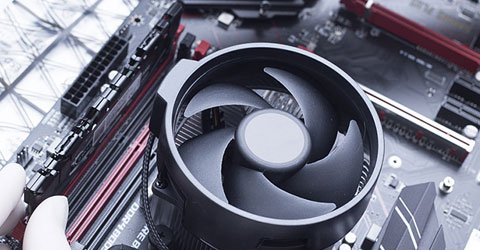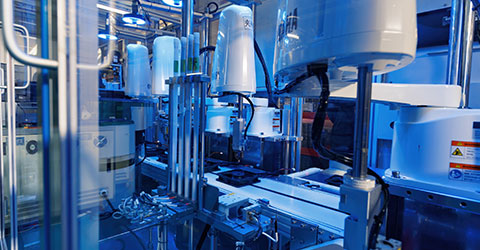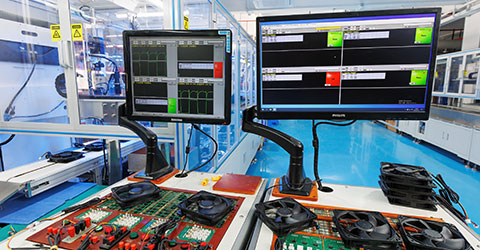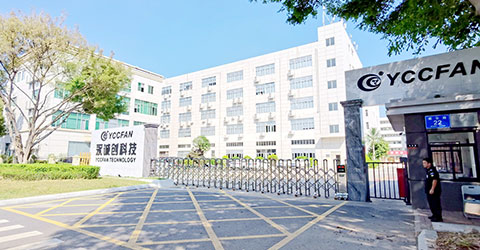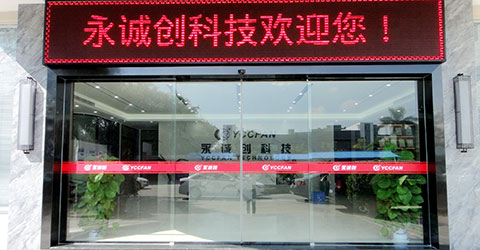What is the Purpose of a Micro Fan?
In this article, we explore the fundamentals of micro fans—their key features, functions, and industry applications—and showcase how YCCFAN, a leading manufacturer based in Shenzhen, China, is driving innovation and excellence in the micro cooling fan market.
Want to learn more about the technical advantages and application solutions of YCCFAN micro fans? Click here to explore in depth and help your products achieve outstanding thermal performance!
1. What Is a Micro Fan?
As modern electronics continue to evolve toward greater power density and smaller form factors, micro fans have become indispensable for managing heat in compact, high-performance systems. These miniature cooling devices are specifically designed to deliver targeted airflow within confined spaces, helping prevent thermal buildup that can degrade performance or reduce component lifespan.
A micro fan is a high-efficiency, ultra-compact air-moving component that provides active cooling for heat-sensitive parts such as processors, sensors, memory modules, or power ICs. Its small size and precise airflow control make it especially well-suited for applications where traditional fans are too large or passive cooling is insufficient. From embedded systems and portable medical instruments to industrial electronics and next-gen IoT devices, micro fans help ensure thermal reliability without compromising space or noise constraints.
Want to learn how YCCFAN’s miniature cooling fans are transforming modern industries? Click here to explore our in-depth article and discover innovative cooling solutions!
Key Features of Micro Fans
Feature | Description |
Typical Size | 15mm to 40mm; optimized for space-limited designs |
Form Factor | Slim, lightweight; suitable for direct integration with PCBs or modular enclosures |
Airflow Direction | Axial (straight-through) or centrifugal (side-exit, 90°), based on application needs |
Voltage Options | 3V / 5V (low-power devices), 12V (industrial and embedded systems) |
Airflow Capacity | 0.5 – 4.0 CFM; focused airflow for hotspot cooling |
Speed Range (RPM) | 8,000 – 15,000 RPM; high-speed operation to compensate for small size |
Noise Level | Typically 15–25 dBA; engineered for quiet environments |
Operational Lifespan | Over 30,000 hours (MTTF), depending on operating temperature and duty cycle |
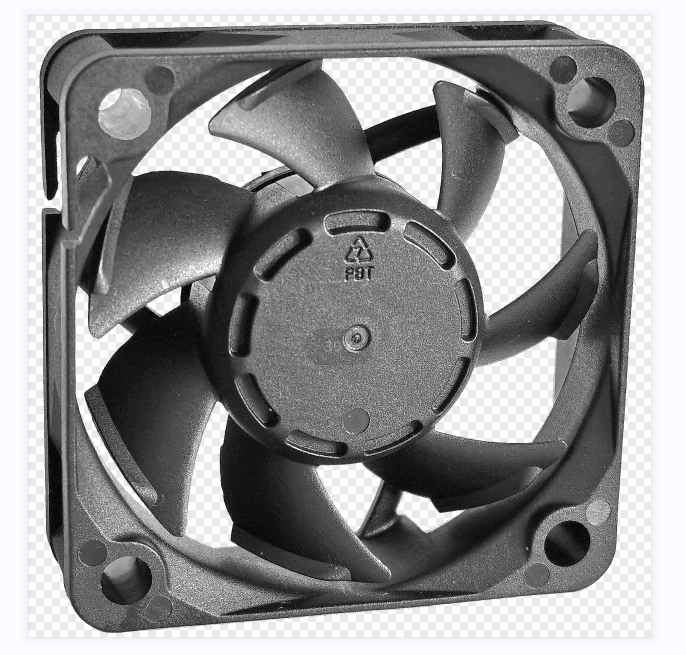
2. Key Functions of a Micro Fan
Micro fans represent more than simple air movers—they are precision-engineered thermal management elements that play a vital role in maintaining stability within the increasingly miniaturized and thermally complex electronic systems of today. Their design philosophy revolves around harmonizing efficiency, spatial economy, and dynamic responsiveness to effectively tackle localized heat challenges that conventional cooling methods often fail to address.
2.1 Targeted Localized Cooling
In modern high-density circuit boards, heat generation is rarely uniform; critical components such as CPUs, power regulators, and sensors create concentrated thermal loads that, if left unchecked, can lead to subtle yet significant performance degradation or system instability. Miniature fans excel in this context by delivering highly focused airflow tailored specifically to these micro-hotspots. This precision not only accelerates heat extraction but also mitigates thermal gradients that would otherwise impose stress on adjacent components. As a result, overall system longevity is enhanced, and the risk of thermal-induced failures over prolonged operation is significantly reduced.
2.2 Space-Efficient Integration
As the drive for miniaturization intensifies, traditional thermal solutions must evolve beyond bulky heatsinks or large axial fans. Micro fans offer ultra-compact, low-profile architectures that can be seamlessly embedded within multilayer PCB stacks or confined device cavities with minimal spatial allowance. Moreover, their mechanical and electrical design intricacies—such as optimized mounting configurations and minimized electromagnetic interference—ensure they coexist harmoniously without compromising either the structural integrity or signal integrity of the host system. This level of integration thus enables sophisticated thermal management strategies in form factors once considered unfeasible.
2.3 Efficient Power Consumption and Stability
Energy constraints remain a critical challenge, particularly in portable and wearable electronics where battery life directly impacts usability. To address this, miniature fans leverage advanced brushless motor designs coupled with intelligent PWM (pulse-width modulation) control, enabling them to optimize power usage dynamically according to real-time thermal load demands. Consequently, this adaptive operation minimizes energy waste while maintaining the necessary airflow and static pressure to cool critical components effectively. The resulting efficiency not only prolongs device uptime but also reduces thermal cycling stress, which can adversely affect component reliability over time.
2.4 Quiet Operation for Sensitive Settings
In environments where minimal acoustic disruption is essential—such as medical monitoring equipment, laboratory instruments, and high-end consumer electronics—the noise profile of cooling components becomes just as critical as their thermal performance. Micro fans meet this need by integrating aerodynamic blade designs that reduce turbulence, precision-engineered bearings that limit mechanical friction, and vibration-dampening mounts. Together, these measures suppress noise emissions to ultra-low levels (15–25 dBA), enabling continuous and unobtrusive cooling. This quiet operation is therefore vital for preserving the ambient environment and ensuring user comfort, all without compromising thermal effectiveness.
Discover what makes YCCFAN’s micro electric fans excel in quality and performance. Click here to read the full story and see why we’re industry leaders!

3. Common Applications
Micro fans have become indispensable across various industries by effectively addressing the distinct thermal management challenges of compact, high-performance devices. Their precision in delivering targeted cooling within limited spaces ensures both operational stability and energy efficiency. Key application areas include:
3.1 Consumer Electronics
The push for slimmer, more powerful consumer devices calls for cooling solutions that are both compact and quiet. Smartphones, portable projectors, and handheld gaming consoles generate considerable heat in tight enclosures. Micro fans provide focused airflow to critical components, preventing overheating without increasing device size or noise levels. Their low acoustic footprint is especially important for maintaining user comfort in personal electronics.
3.2 Computing Devices
Mini PCs, embedded systems, and high-speed SSDs operate with dense component layouts and elevated processing demands, resulting in localized heat buildup. Micro fans effectively channel airflow directly to heat-sensitive areas like CPUs and memory chips. This precise cooling prevents thermal throttling and hardware stress, ensuring reliable performance even in compact, sealed cases where conventional fans cannot fit.
3.3 Medical Equipment
In portable medical devices and sensor modules, accurate thermal control is essential for device safety and measurement precision. Mini fans are commonly found in handheld diagnostic instruments, patient monitors, and biosensors. Their small size enables ergonomic device designs, while their quiet operation meets the strict noise regulations often required in medical environments.
3.4 Industrial Use
Industrial applications such as IoT sensors, automation controllers, and battery management systems demand continuous, efficient cooling under varying ambient conditions. Micro fans provide a durable and energy-conscious solution, helping to prolong component lifespan and sustain dependable operation in challenging industrial settings where space is limited.
3.5 Drones and Robotics
Drones and compact robotic systems require thermal management solutions that combine minimal weight, low noise, and effective cooling. Integrated micro fans cool processors, power electronics, and sensors within confined chassis, where airflow is often restricted. Their ability to maintain optimal temperatures without adding bulk or noise is vital for enhancing flight endurance, operational accuracy, and component reliability.
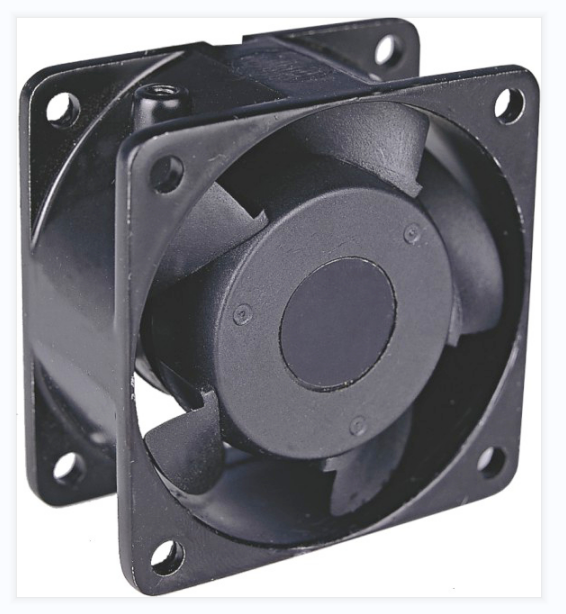
4. About YCC Fan:Industry-Leading Expertise in Micro Cooling Fans
Founded in 2011 and based in Shenzhen, China, YCCFAN has established itself as a prominent player specializing in the research, development, manufacturing, and sales of industrial cooling fans and blowers. Our mission is to become a leading brand within China’s micro cooling fan industry, driven by innovation, quality, and scale.
Discover YCCFAN’s high-performance Mini Fans—engineered for precision cooling in the tightest spaces. Contact us today to enhance your device’s reliability and efficiency with our trusted industrial solutions!
Learn more:
Conclusion
Micro fans play an essential role in ensuring the thermal reliability of today’s compact electronic systems. With advanced features like targeted airflow, energy-efficient operation, and ultra-quiet performance, they offer a powerful solution to the increasingly complex cooling needs across diverse industries.



